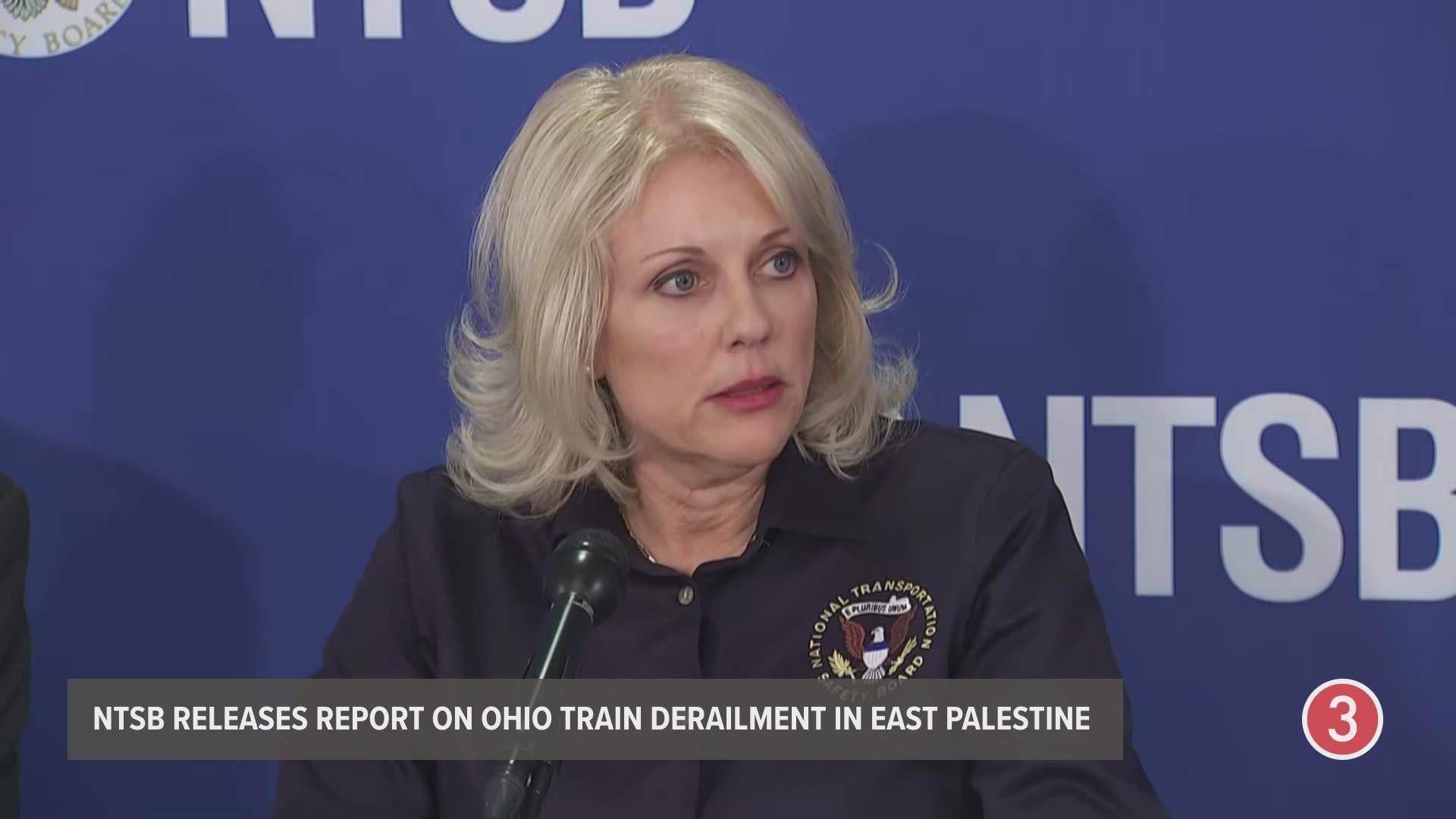EAST PALESTINE, Ohio — On Thursday, National Transportation Safety Board (NTSB) Chair Jennifer Homendy held a press conference to discuss the initial findings of the investigation into the train derailment that occurred in East Palestine, Ohio.
But before getting into the findings, Homendy first announced that NTSB will hold an investigative field hearing.
According to Homendy, the goals of the field hearing are as follows:
- Inform the public
- Collect factual information from witnesses
- Discuss possible solutions
- Build consensus for change
Homendy described such hearings, in which invited witnesses will be publicly questioned, as "rare." While she did not provide an exact date for when it would take place, she said it will occur this coming spring.
"The NTSB has been on the ground since day 1. We completed our investigative work, our on-scene work, yesterday. But we still have a lot of work to do as a part of this investigation," Homendy said. "Today, I'm announcing that the NTSB will hold a rare investigative field hearing this spring in East Palestine. We don't have investigative hearings often. It is rare. But we will question invited witnesses."
As far as the initial findings of the investigation into the Feb. 3 incident, in which a train carrying hazardous materials operated by Norfolk Southern derailed in East Palestine, later resulting in a controlled release of the chemicals on board, NTSB released the following on Thursday:
Train 32N was operating with a dynamic brake application as the train passed a wayside defect detector on the east side of Palestine, Ohio, at milepost (MP) 49.81. [4] The wayside defect detector, or hot bearing detector (HBD), transmitted a critical audible alarm message instructing the crew to slow and stop the train to inspect a hot axle. The train engineer increased the dynamic brake application to further slow and stop the train. During this deceleration, an automatic emergency brake application initiated, and train 32N came to a stop.
On the Fort Wayne Line of the Keystone Division, NS has equipped their rail network with HBD systems to assess the temperature conditions of wheel bearings while en route. The function of the HBD is to detect overheated bearings and provide audible real-time warnings to train crews. Train 32N passed three HBD systems on its trip before the derailment. At MP 79.9, the suspect bearing from the 23rd car had a recorded temperature of 38°F above ambient temperature. When train 32N passed the next HBD, at MP 69.01, the bearing’s recorded temperature was 103°F above ambient. The third HBD, at MP 49.81, recorded the suspect bearing’s temperature at 253°F above ambient. NS has established the following HBD alarm thresholds (above ambient temperature) and criteria for bearings:
- Between 170°F and 200°F, warm bearing (non-critical); stop and inspect
- A difference between bearings on the same axle greater than or equal to 115°F (non-critical); stop and inspect
- Greater than 200°F (critical); set out railcar
Here's the full preliminary report from the NTSB:
You can watch the full press conference below:

